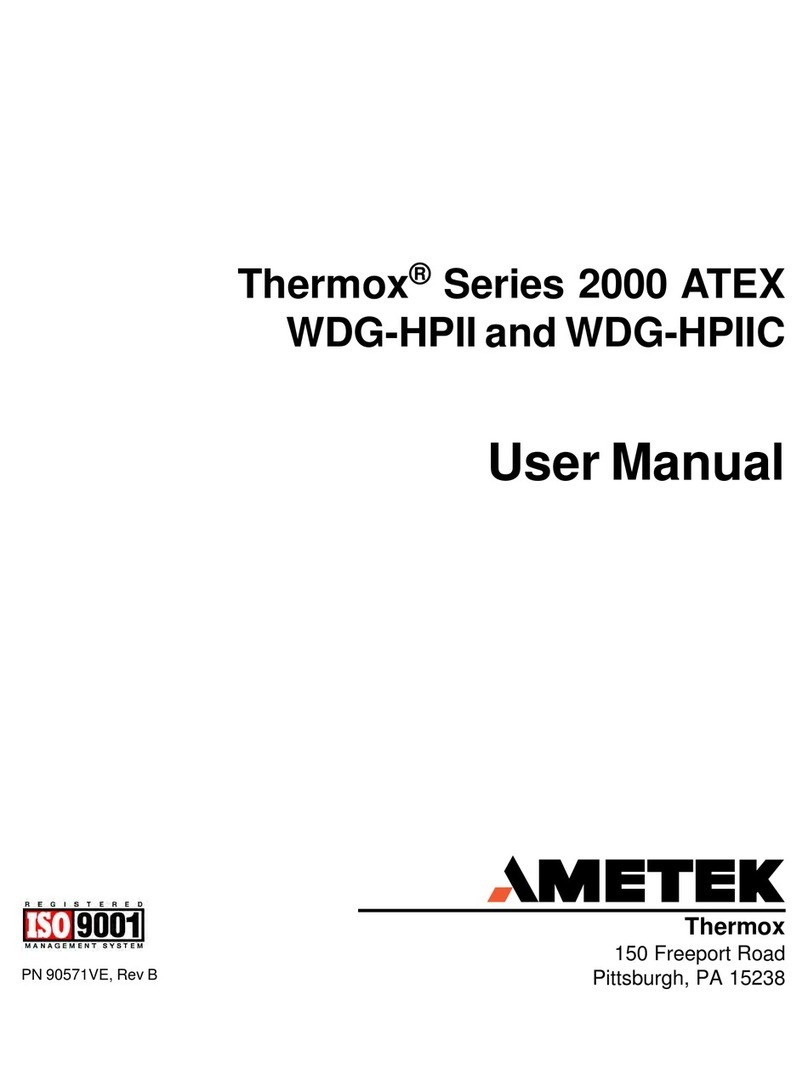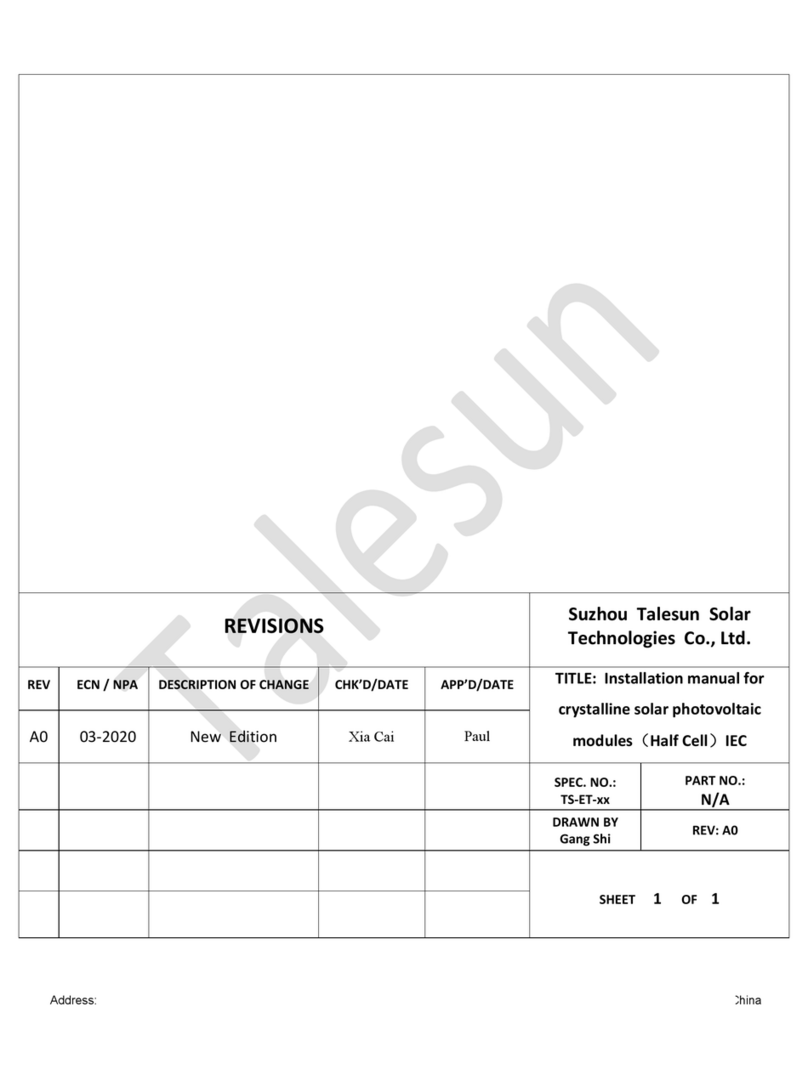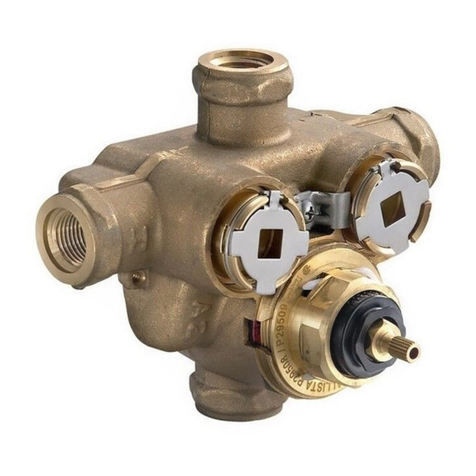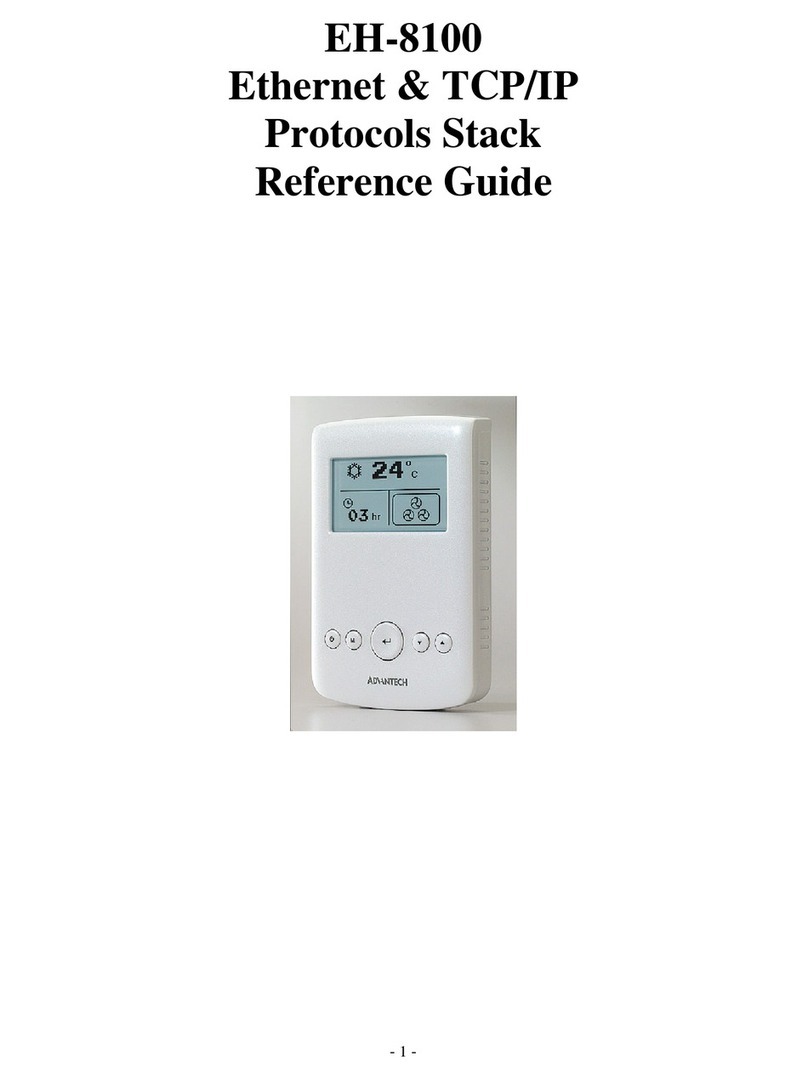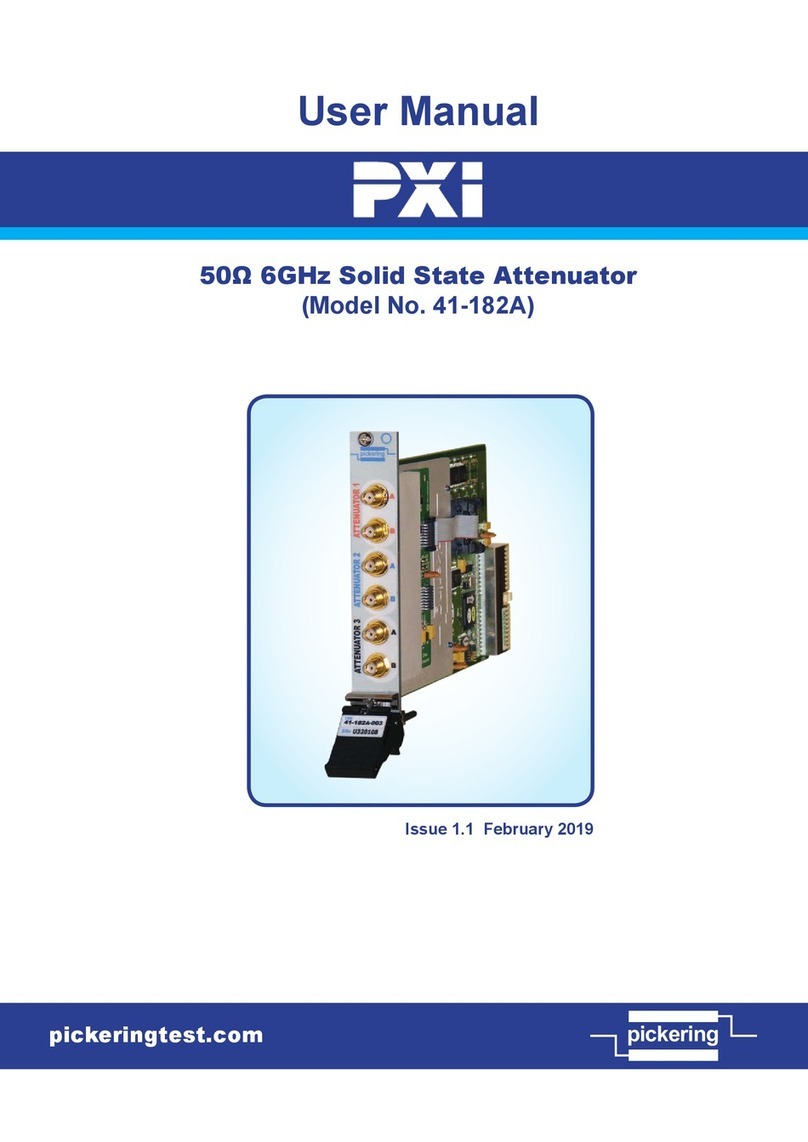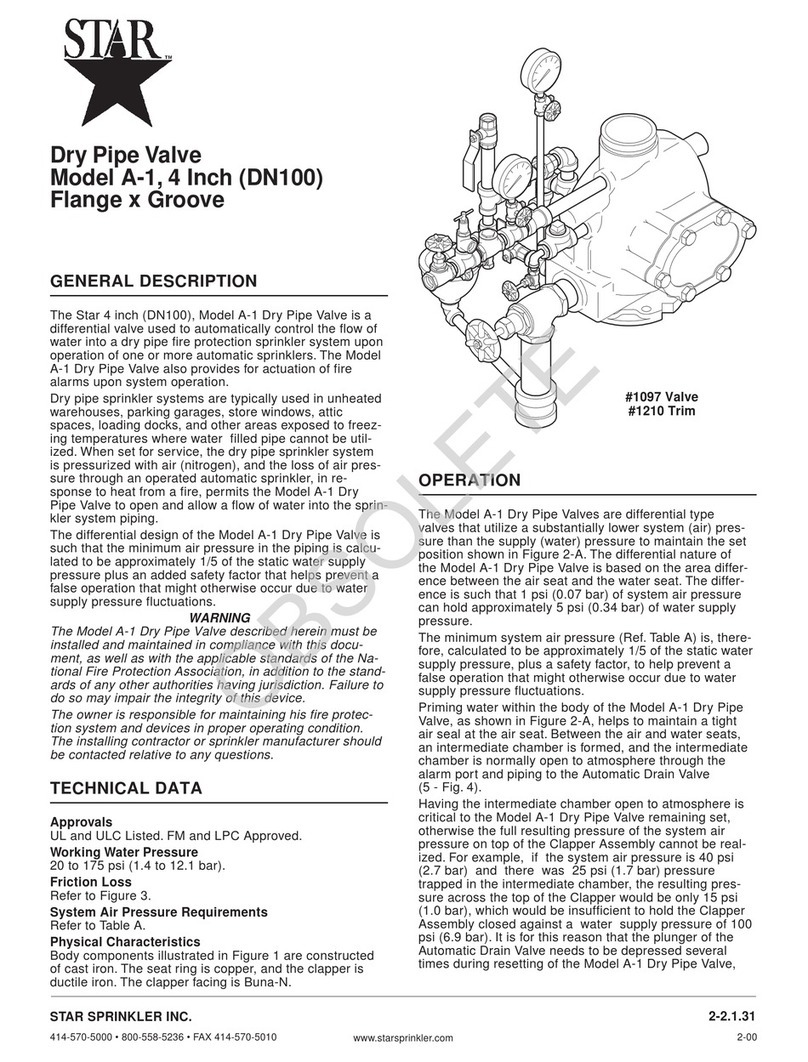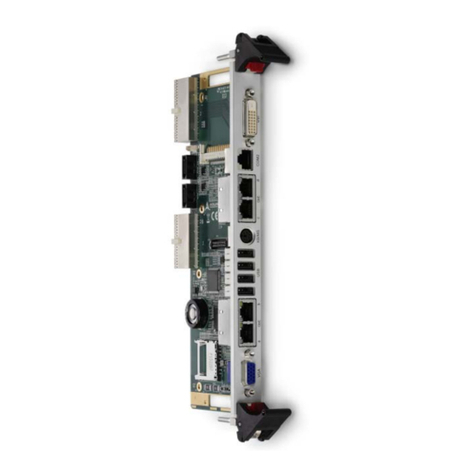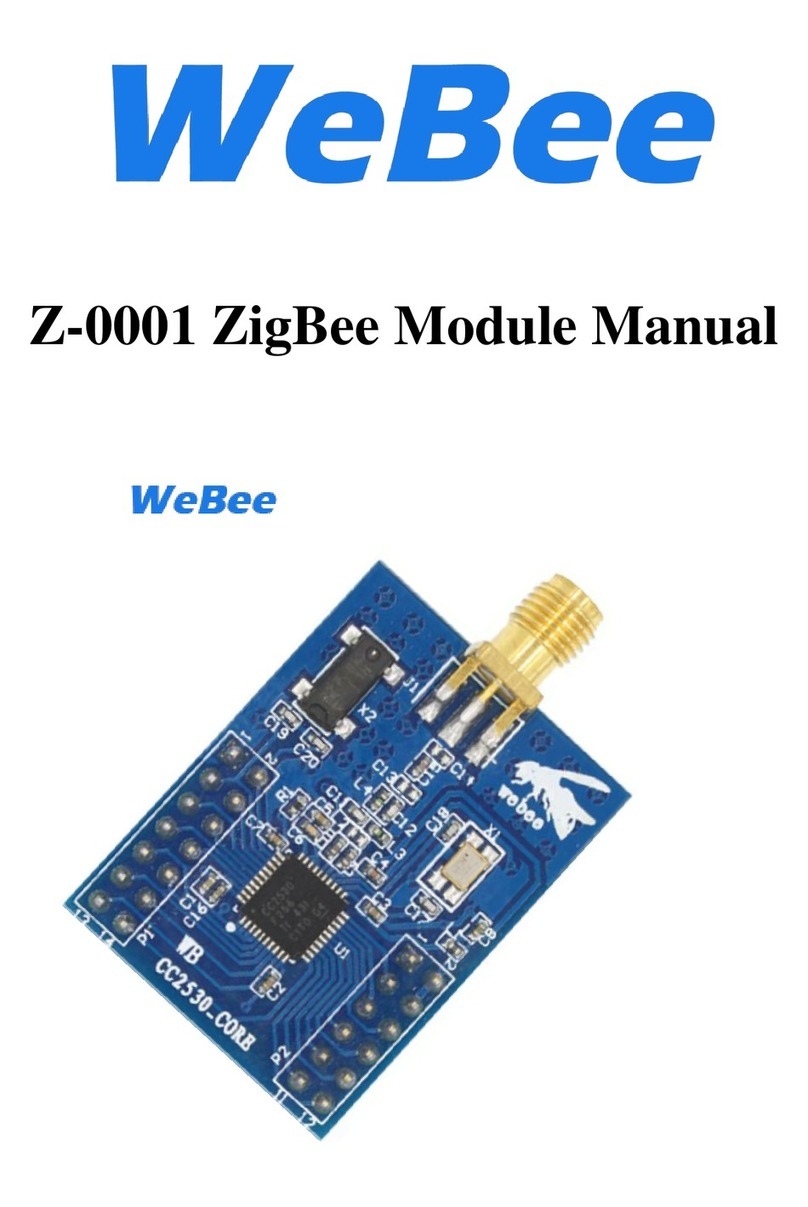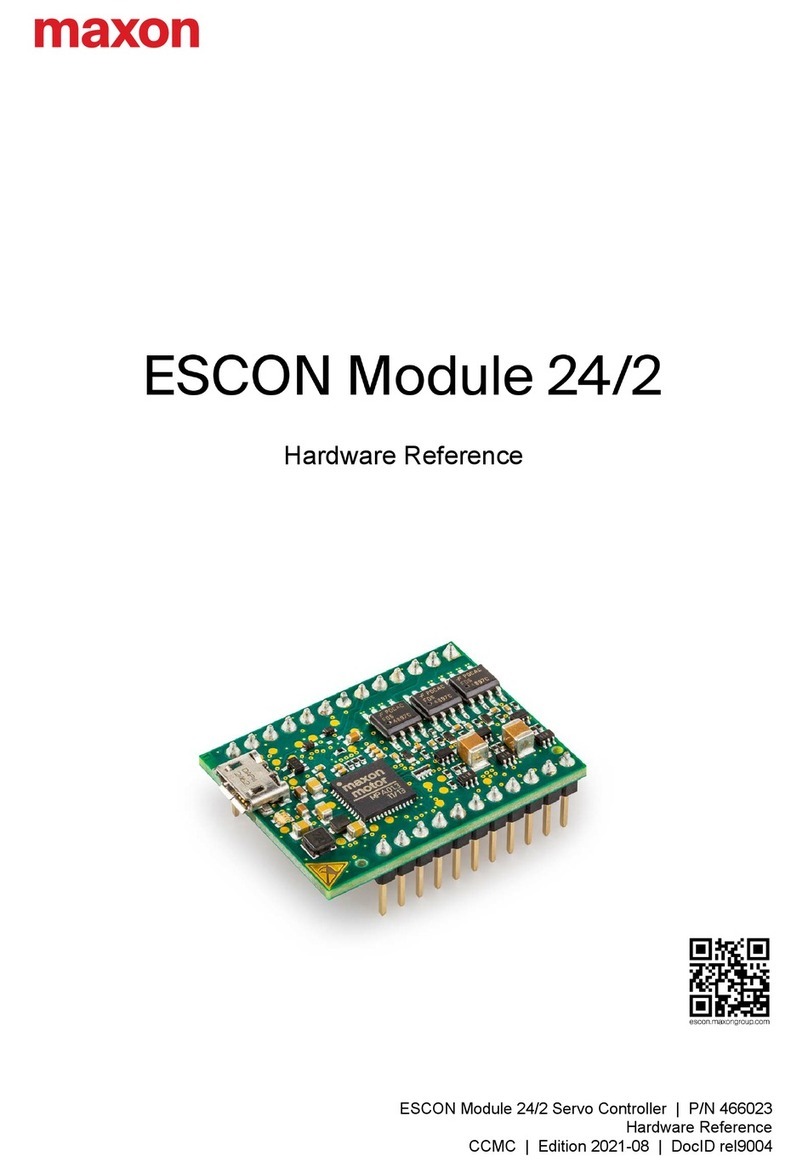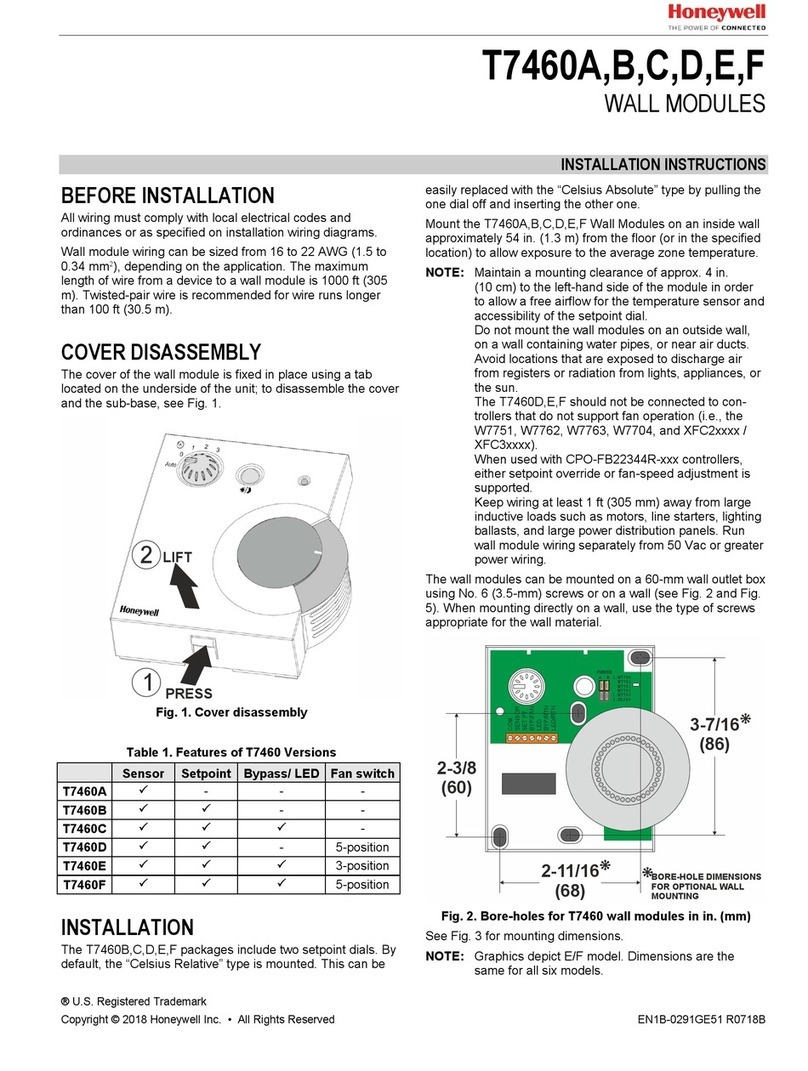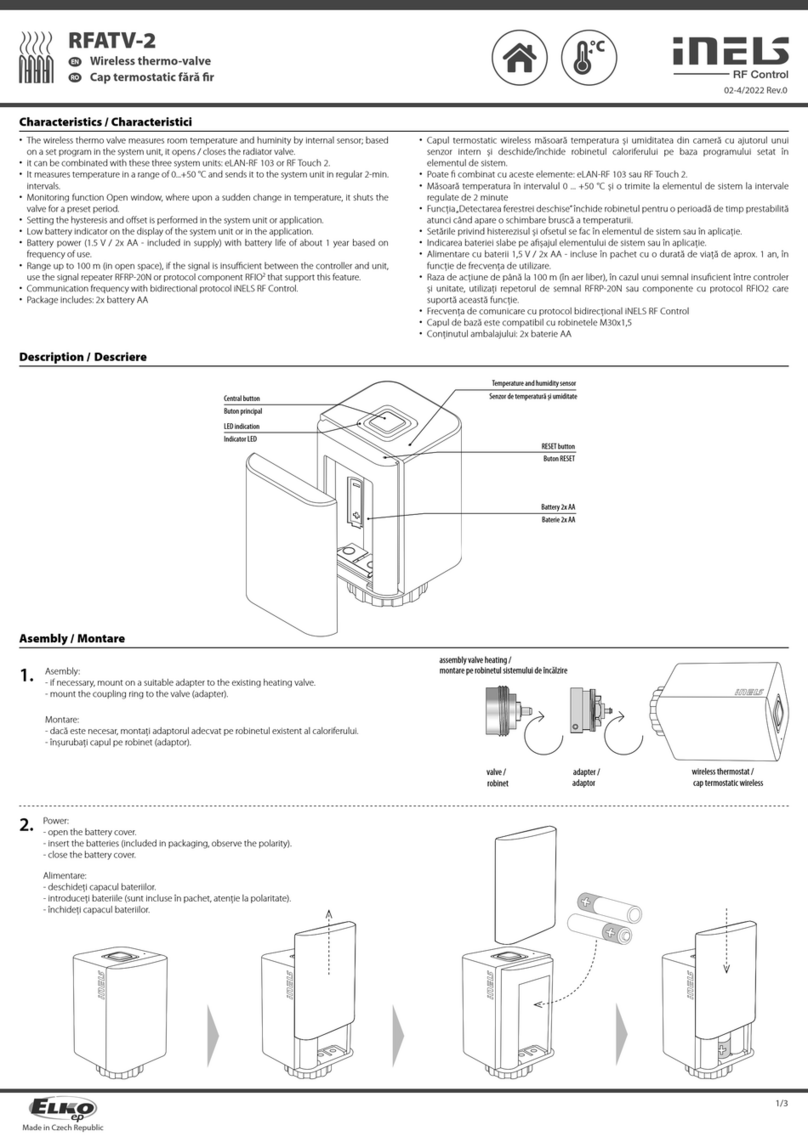Governors America ESD2300 Series User manual

1
Governors America Corp. © 2020 Copyright All Rights Reserved
ESD2300 Series Speed Control Unit 9-2020-A2 PIB4138
ESD2300 Series
Speed Control Unit
2SPECIFICATIONS
RELIABILITY
Vibration 5 g @ 20-500 Hz
Testing 100% Functionally Tested
ENVIRONMENTAL
Ambient Temperature -40° to 85 °C (-40 ° to 180 °F)
Relative Humidity up to 95 %
All Surface Finishes Fungus Proof
and Corrosion Resistant
PHYSICAL
Dimension See Wiring Diagram and Outline
Weight 1.2 lbf (0.544 kgf)
Mounting Any position, Vertical Preferred
COMPLIANCE / STANDARDS
Agency CE and RoHS Requirements
1
The ESD2300 Series speed control unit is an electronic speed control
device designed to control engine speed with fast and precise response
to transient load changes. This closed loop control, when connected
to a proportional electric actuator and supplied with a magnetic speed
sensor signal, will control a wide variety of engines in an isochronous
or droop mode. It is designed for high reliability and hard potted to with-
stand the engine environment.
• 12 V DC
• Variable Speed Control
• Adjustable PID Functions
• Foot Pedal and Installation Kit
• Single Element Speed Switch
PERFORMANCE
Isochronous Operation ± 0.25 % or better
Speed Range / Governor 1 - 7.5 KHz Continuous
Speed Drift with Tempera-
ture
Typically < +0.5 %
Idle Range 500 to 5000 Hz with trim pot installed
INPUT / OUTPUT
DC Supply Nominal 12 V DC; 8-20 V DC
Transient and Reverse Voltage Protected
Polarity Negative Ground (Case Isolated)
Power Consumption 60 mA continuous plus actuator current
Speed Signal Range 0.5 - 50 V AC
Actuator Current Range
@ 77° F (25 °C)
MIN 2.5 A
MAX 10 A
Speed Sensor Signal 0.5 - 50 V AC RMS
PRODUCT DESCRIPTION USE WITH FOOT PEDAL
ESD2349-12 12VDC,ORoad,VariableSpeed,HorizontalFootPedal FP100
ESD2351-12 12 V DC, supports Horizontal and Vertical Foot Pedals FP201* (Vertical)
FP202** (Horizontal)
ESD2352-12 12VDC,conguredforusewithMorseFootPedal Not supplied by GAC
OVERVIEW
* Pedal with mounting hardware available as KT-FP201
** Pedal with mounting hardware available as KT-FP202

2
Governors America Corp. © 2020 Copyright All Rights Reserved
ESD2300 Series Speed Control Unit 9-2020-A2 PIB4138
3INSTALLATION
See Section 10 for more dimensions
Mount in a cabinet,
engine enclosure, or
sealed metal box.
Vertical orientation
allowsuidstodrain
in moist environ-
ments.
Avoid Extreme Heat
Dimensions: in
[mm]

3
Governors America Corp. © 2020 Copyright All Rights Reserved
ESD2300 Series Speed Control Unit 9-2020-A2 PIB4138
4WIRING
TERMINAL DEFINITION NOTES
A & B Magnetic Speed
Pick-up
• Wires must be twisted and/or shielded for their entire length
• Gap between the speed sensor and gear teeth should not be smaller than 0.025 in
(0.64mm) and no larger than 0.035 in (0.89 mm)
• Speed sensor voltage should be at least 1.0 V AC RMS during cranking
C & D Battery Power 12VDC
• 16 gauge (1.3 mm2) or larger wire
• Install a 15 amp fuse in the positive battery lead to protect against reverse voltage
• Battery positive (+) input is Terminal C
E & F Actuator (+/-) 16 gauge (1.3 mm2) or larger wire
G & H & J Overspeed Shut Down
System
TerminalG─NormallyOpen
TerminalH─Common
TerminalJ─NormallyClosed
K Through P Foot Pedal
TerminalK─Supply─Red
TerminalL─SensorSignal─Black
TerminalM─Ground─White
RECOMMENDATIONS
1. Use shielded cable for all external connections to the ESD control.
2. One end of each shield, including the speed sensor shield, should be grounded to a single point on the ESD case.

4
Governors America Corp. © 2020 Copyright All Rights Reserved
ESD2300 Series Speed Control Unit 9-2020-A2 PIB4138
START THE ENGINE
The speed control unit governed speed setting is factory set at approximately engine idle speed; 1000 Hz., Speed sensor signal or 600
RPM.
Crank the engine with DC power applied to the governor system. The actuator will energize to the maximum fuel position until the engine
starts. The governor system should control the engine at a low idle speed. If the engine is unstable after starting, see ADJUSTING FOR
STABILITY in this section.
The governed speed set point is increased by turning the SPEED ad-
justment clockwise (25-turn potentiometer).
Once the engine is running at operating speed and at no load, the following governor performance adjustments can be made to increase
engine stability.
PARAMETER PROCEDURE
GAIN 1. Rotate the GAIN adjustment clockwise until instability develops.
2. Gradually move the adjustment counterclockwise until stability
returns.
3. Move the adjustment one division further counterclockwise to en-
sure stable performance (270° potentiometer).
4. If instability persists, adjust the next parameter.
STABILITY Follow the same adjustment procedure, steps 1 - 3, as the GAIN pa-
rameter.
Normally, adjustments made at no load achieve satisfactory performance. If further performance
improvements are required, see Section 6, SYSTEM TROUBLESHOOTING.
Make sure the following adjustments are set before starting the engine.
GAIN Middle Position
STABILITY Middle Position
5ADJUSTMENTS
BEFORE ENGINE STARTUP
SPEED CONTROLLER SPEED SETTING
ADJUSTING FOR STABILITY
ENGINE OVERSPEED
The speed potentiometer is used to set maximum speed with the foot pedal depressed, or the minimum speed (idle) with the pedal
released.
•ESD2349usesGACFootpedalFP100forHorizontalinstallations.
•ESD2351usesGACFootPedalFP201forverticalmountingorFP202forhorizontalinstallations.
•ESD2352isspeciallyconguredforcompatibilitywithaMorsefootpedal.MorsefootpedalsarenotsuppliedbyGAC.
The ESD2300 Series speed control unit includes a single element speed switch to sense and react to an overspeed condition. An internal
relayandLEDareactivatedwhenthisoccurs.Thisrelayshouldbeusedtoshutothefuelorignitiontoprovidesafeengineshutdown.
The speed switch feature includes a wide range of adjustment to set the trip point.
VARIABLE FOOT PEDAL OPERATION

5
Governors America Corp. © 2020 Copyright All Rights Reserved
ESD2300 Series Speed Control Unit 9-2020-A2 PIB4138
If the engine governing system does not function, the fault may be determined by performing the voltage tests described in Steps 1 through
3. Positive (+) and negative (-) refer to meter polarity. Should normal values be indicated during troubleshooting steps, the fault may be with
theactuator(device)orthewiringtotheactuator.Testsareperformedwithbatterypoweronandtheengineo,exceptwherenoted.See
actuator publication for testing procedure on the actuator.
STEP WIRES NORMAL READING PROBABLE CAUSE OF
ABNORMAL READING
1 C(+) & D(-) Battery Supply
Voltage
(12 V DC)
1.
2.
3.
DC battery power not connected. Check for blown fuse.
Low battery voltage
Wiring error
2 A(+) & B(-) 1.0 V AC RMS min.
while cranking
1.
2.
3.
Gap between speed sensor and gear teeth is too large. Check Gap.
Improperordefectivewiringtothespeedsensor.Resistanceshouldbe30to1200Ω.Seeyourspe-
cicmagneticpickupdocumentationforresistanceinformation.
Defective speed sensor.
3 C (+) & F 0.5 - 1.5 V DC while
cranking
1.
2.
3.
Short/open in actuator / device wiring
Defective speed control unit
Defective actuator / device, see your Installation Manual System Troubleshooting section.
If unsuccessful in solving instability, contact GAC for assistance.
INSTABILITY
INSTABILITY SYMPTOM PROBABLE CAUSE OF
ABNORMAL READING
Fast Periodic The engine
seems to jitter
with a 3 Hz or
faster irregularity
of speed.
1.
2.
3.
Readjust the GAIN and STABILITY for optimum control.
Remove the E1 to E2 jumper. Readjust GAIN and STABILITY.
Turnootherelectricalequipmentthatmaybecausinginterference.
Slow Periodic An irregularity
of speed below
3 Hz.
1.
2.
3.
Readjust the GAIN and STABILITY
Adjust the DEAD TIME COMPENSATION by adding a capacitor from posts E2 to E3. Start with 10 mfds and
increase until instability is eliminated.
Check fuel system linkage during engine operation for:
a. binding
b. high friction
c. poor linkage
Non-Periodic Erratic Engine
Behavior
1. Increasing the GAIN should reduce the instability but not totally correct it. If this is the case, there is likely a
problem with the engine. Check for:
a.enginemis-rings
b. erratic fuel system
c. load changes on the generator set voltage regulator.
SYSTEM INOPERATIVE
6SYSTEM TROUBLESHOOTING

6
Governors America Corp. © 2020 Copyright All Rights Reserved
ESD2300 Series Speed Control Unit 9-2020-A2 PIB4138
SYMPTOM NORMAL READING PROBABLE CAUSE OF
ABNORMAL READING
Engine
Overspeeds
1. Do Not Crank. Apply DC
power to the governor
system.
1.
2.
After the actuator (device) goes to full fuel/open, disconnect the speed sensor wires. If the
device is still at full fuel, the speed control unit is defective.
If the actuator is at minimum fuel position and there exists an erroneous position signal, then
check speed sensor cable.
2. Manually hold the
engine at the desired
running speed. Measure
the DC voltage between
Terminals F(-) & C(+) on
the speed control unit.
1.
2.
3.
4.
If the voltage reading is 0.5 to 1.5 V DC:
a. SPEED adjustment set above desired speed.
b. Defective speed control unit.
If the voltage reading is above 1.5VDC, actuator or linkage could be binding.
Set point of the overspeed shutdown set too low.
If the voltage reading is below 0.5 V DC, defective speed control unit.
Device does not
energize fully.
1. Measure the voltage
at the battery while
cranking.
1. If the voltage is less than:
a. 7 V for a 12 V system, or
b. 14 V for a 24 V system,
Check or replace battery.
2. Momentarily connect
Terminals A and F. The
device should move to
the full fuel position.
1.
2.
3.
4.
Device or battery wiring in error.
Device or linkage binding.
Defective device.
Fuse opens. Check for short in device or harness.
Engine remains
below desired
governed speed.
1. Measure the device
output, Terminals A &
B, while running under
governor control.
1.
2.
If voltage measurements is within 2 V DC or more of the battery supply voltage level, then fuel
control restricted from reaching full fuel position. Possibly due to mechanical governor, carbu-
retor spring, or linkage interference.
SPEED parameter set too low.
UNSATISFACTORY PERFORMANCE
INSUFFICIENT MAGNETIC SPEED SIGNAL
A strong magnetic speed sensor signal will eliminate the possibility of missed or extra pulses. The speed control unit will govern well with
1.0 volts RMS speed sensor signal. A speed sensor signal of 3 V AC or greater at governed speed is recommended. Measurement of the
signal is made at Terminals A and B.
The amplitude of the speed sensor signal can be raised by reducing the gap between the speed sensor tip and the engine ring gear. The
gap should not be any smaller than 0.020 in (0.45 mm). When the engine is stopped, back the speed sensor out by 3/4 turn after touching
the ring gear tooth to achieve a satisfactory air gap.
6SYSTEM TROUBLESHOOTING
This manual suits for next models
3
Table of contents
Other Governors America Control Unit manuals

Governors America
Governors America ESD5300 Series User manual

Governors America
Governors America ESD2100 Series User manual

Governors America
Governors America DDM-101 User manual

Governors America
Governors America SYC6714 User manual

Governors America
Governors America ESD2200 Series User manual
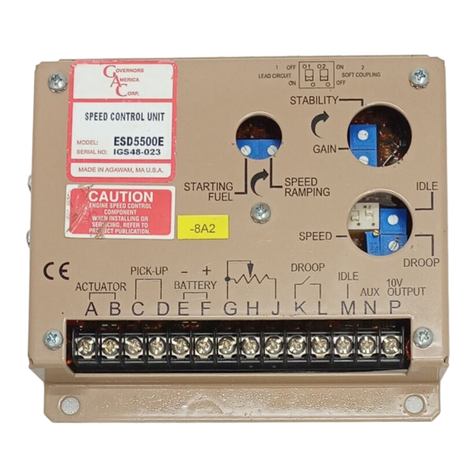
Governors America
Governors America ESD5500E Series User manual
